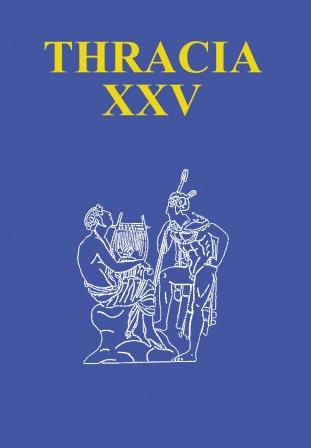Нови данни за поменалните практики в некропола на Аполония
New Data on Commemorative Practices in the Necropolis of Apollonia Pontica
Author(s): Pavlina Devlova, Milena KrumovaSubject(s): History, Archaeology, Fine Arts / Performing Arts, Cultural history, Photography, Architecture, Geography, Regional studies, Visual Arts, Historical Geography, Maps / Cartography, Local History / Microhistory, Social history, Ancient World
Published by: Институт за балканистика с Център по тракология - Българска академия на науките
Keywords: Apollonia Pontica; necropolis; rituals of commemoration
Summary/Abstract: This part of the necropolis of Apollonia Pontica was actively used without interruption from the end of the 5th century BC to the III rd century BC. The space has been planned since its creation in the 5th century BC. The areas studied were most likely used by wealthier families, given the construction of such expensive burial and fencing facilities. For the first time in the necropolis of Apollonia, was discovered and documented a large section of the outer peribolus of the sacral space – the Southern Peribolos. The outer Peribolos was probably built in the 4th century BC. Confirmation of the date is the reused stelae, base and fragments of other similar elements. Since the beginning of the use of the family site, it has designated a special place for commemorative practices. It is certain that the places of burial, funeral and commemoration are different and memory is preserved in time, because there is no case of a broken grave. Numerous discovered preserved whole vessels may have been left behind after the change of sand, and he eventually poured them, helping to preserve them. Honoring deceased relatives is a long-standing practice. Probably the place is ennobled, there are stairs, open spaces that allow people to gather. Wine containers, jars, glasses, food containers allow us to visualize, although partially, the rituals of commemoration. Even though they come from a long way, the tradition is longlived, the remains remain in the necropolis – that is why the bottoms are punctured and missing, the knife left in the amphora. After the 3rd century BC this section has been abandoned and is no longer used – either with the function of a necropolis or for other purposes.
Journal: Thracia
- Issue Year: 2020
- Issue No: 25
- Page Range: 147-157
- Page Count: 11
- Language: English, Bulgarian
- Content File-PDF

